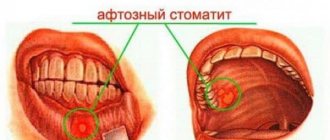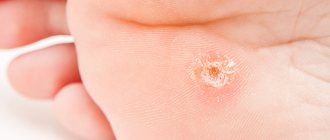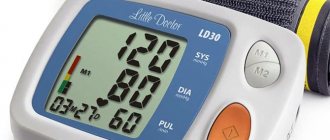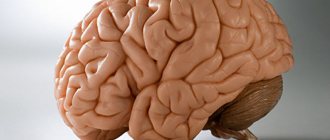Atherosclerosis can lead to the development of various diseases. As a rule, the heart and blood vessels are affected first. In some cases, atherosclerotic cardiosclerosis occurs, characterized mainly by a long course and complicated by heart failure or cardiac asthma.
Cardiosclerosis is a myocardial disease caused by the formation of fibrous elements in the heart muscle. Atherosclerosis and myocardial cardiosclerosis are the most well-known diseases today. In some cases, they occur against the background of any other myocarditis.
Atherosclerotic cardiosclerosis is the result of damage to the coronary arteries (vessels supplying blood to the heart muscle) by atherosclerosis.
If the patient undergoes appropriate and timely treatment, atherosclerotic cardiosclerosis can proceed favorably. In severe cases, myocardial infarction often develops against the background of focal cardiosclerosis. Therefore, in order to avoid death, you should not hesitate to contact your doctor, who, if necessary, will refer you to another specialist.
Video: ATHEROSCLEROSIS - CAUSES, SYMPTOMS AND CONSEQUENCES
What are atherosclerotic plaques?
Atherosclerosis begins when cholesterol deposits appear on the walls of the arteries. Normal blood flow is ensured by the elasticity and smoothness of the inner surface of the vessel - the endothelium. When a lipid layer is formed, the lumen of the arteries narrows, the endothelium is damaged due to the introduction of harmful cholesterol into it, and the vessel walls become rigid. Gradually, the growths increase and atherosclerotic plaques form in the form of tubercles, which can partially or completely block the lumen. In addition to cholesterol, they contain calcium and foreign substances. As a rule, the process of plaque formation in blood vessels affects the entire body.
Causes of atherosclerotic cardiosclerosis
The main cause of this disease is atherosclerosis. Age plays an important role in the onset of the pathology - it usually appears in the fifth decade of life, and the likelihood of its occurrence increases with age. Also, atherosclerotic cardiosclerosis can occur on its own or as a complication, against the background of the development of angina or hypertension. All of these disorders are most common among people over 60 years of age.
Unlike acute forms of ischemic cardiomyopathy, atherosclerotic cardiosclerosis is equally common among both sexes, while in older people it is more common among women. There are also factors that contribute to the occurrence of the disease:
- Passive lifestyle.
- A diet that contains high levels of fat and cholesterol.
- A disorder of fat metabolism, which is more common in patients with obesity, diabetes, myxedema or familial hypercholesterolemia, etc.
- Psychological stress at home or at work.
- Extreme emotional turmoil.
- Smoking.
- Menopause.
- Ovariectomy, etc.
Atherosclerotic cardiosclerosis may occur more often due to nodular panarteritis or coronary artery embolism.
Causes
The exact causes of deposits in the arteries are unknown. It is believed that the main thing is a high level of bad cholesterol (LDL) in the blood. In addition, doctors identify a number of factors that contribute to the progression of the disease and more rapid formation of atherosclerotic plaques:
- smoking;
- high blood pressure;
- a large amount of animal fats in food;
- a small amount of vegetables, herbs, fruits;
- excess weight and abdominal fat deposition;
- constant overeating;
- increased blood glucose levels;
- physical inactivity;
- alcohol abuse;
- natural processes of aging of the body.
Causes and risk factors
In atherosclerotic heart disease, the aorta and coronary vessels are affected. The process of deposition of cholesterol plaques begins on their wall. This leads to a narrowing of the lumen of the vessels, which interferes with normal blood flow and, as a result, the supply of oxygen to the myocardium.
Such a pathological process is complicated by the development of coronary heart disease, heart failure, hypertension, and myocardial infarction. Atherosclerotic heart disease often causes death.
Atherosclerotic heart disease is not noted as a separate diagnosis in the clinical classification of cardiovascular diseases. But in ICD 10 it is included in the group “Chronic ischemic heart disease” with code 125.1.
When the lumen of the coronary arteries is partially blocked by the resulting cholesterol plaque, diffuse death of heart cells occurs, and connective tissue is formed in their place. In this case, they talk about the development of atherosclerotic cardiosclerosis.
Atherosclerosis develops over many years. There are many reasons behind the onset of this pathology. Therefore, it belongs to the category of polyetiological diseases. Experts identify 3 main factors that provoke the development of atherosclerosis:
- arterial hypertension;
- high blood cholesterol levels;
- diabetes.
Smoking and alcohol abuse also increase the risk of developing atherosclerosis. In addition, the likelihood of developing this disease is influenced by factors such as age, gender, excess weight, hereditary predisposition, excessive consumption of animal fats, regular exposure to stress, and lack of fiber in the diet.
It is known that men experience atherosclerosis more often than women.
Plaque formation and composition
In healthy vessels, the formation of a growth is prevented by wall enzymes that dissolve fats. In order for the process of formation of a complex compound of fats, proteins and calcium to begin, certain conditions are necessary: disruption of the protective mechanisms, damage to the vascular wall, which becomes loose.
Plaque formation occurs gradually. First, cholesterol is deposited, over time it becomes overgrown with connective tissue and a pronounced tubercle appears
The plaque, consisting of lipids and connective tissue fibers, is a core with an outer shell. The core contains cholesterol and esters. Its cells are surrounded by macrophages with a foamy structure, including fats, which destroy the macrophages and enter the nucleus. The outer part of the plaque, located in the lumen of the artery, is a fibrous membrane, including elastin and collagen, the content of which determines the likelihood of its rupture.
At the beginning of their formation, lipid growths have a semi-liquid structure, so their parts can come off at any time, begin to move around the vessel and close its lumen. Also during this period, plaques can still be dissolved, so treatment is best started at an early stage of the disease.
Gradually, calcium is deposited in the growth shell, and it becomes more and more dense. This creates a calcified plaque that grows very slowly. It obstructs blood flow and leads to poor blood supply.
So, plaque formation occurs as follows:
- Accumulation of fat in the artery wall.
- Inclusion in the process of leukocytes that form inflammatory reactions (monocytes, T-lymphocytes).
- The transition of monocytes into the walls of blood vessels, the formation of macrophages with a foamy structure, pathological changes in the inner surface of the artery.
- Adhesion of platelets to the damaged part of the vascular wall.
- Immune response in the form of release of protective mediators and cell growth factors.
- Production and accumulation of elastin and collagen and the appearance of their areas in the endothelium.
- An increase in the size of the growth and its compaction.
Treatment methods
It is almost impossible to completely cure this disease. Nevertheless, timely medical or surgical treatment will help stop the progression of the disease and eliminate its symptoms.
Atherosclerotic heart disease is treated both by conservative therapy and by surgical intervention. This is determined by the severity of the disease and the stage at which it was diagnosed. The main goal of drug treatment is to reduce blood cholesterol levels.
At the initial stage of the disease, this is achievable by following a special anti-cholesterol diet. It involves significantly limiting the consumption of animal fats and including as much fiber as possible in the diet.
If atherosclerosis of the heart has been diagnosed in an advanced form, then treatment will not be limited to following a diet. You will need to prescribe and take special medications. However, atherosclerosis is considered a chronic disease, and it is impossible to completely cure the patient with medications.
Drug treatment will help maintain the patient’s quality of life and reduce the likelihood of developing complications characteristic of atherosclerosis, such as myocardial infarction and stroke. The treatment regimen for each patient is drawn up individually, taking into account the characteristics of the course of the disease and the patient’s medical history.
Treatment of atherosclerosis of the heart includes taking drugs of various groups:
- Lipid-lowering drugs. Their action is aimed at reducing the concentration of total cholesterol and low and very low density lipoproteins, as well as triglycerides. Also, drugs of this pharmacological group help increase the level of high-density lipoproteins or “good” cholesterol.
- Anticoagulants. Patients with atherosclerosis of the heart have a significantly increased risk of thrombosis. To prevent blockage of the coronary arteries by a blood clot, drugs to reduce blood viscosity are included in the therapeutic regimen. For this purpose, in most cases, drugs based on warfarin or aspirin are prescribed.
- Antihypertensive drugs. Atherosclerosis of the heart inextricably entails an increase in blood pressure. Instability of blood pressure negatively affects the vascular wall, which, under such influence, gradually loses its elasticity and becomes brittle. In this condition, it is easily damaged, and an atherosclerotic plaque forms at the site of damage. Therefore, special medications are prescribed to stabilize blood pressure; they also help inhibit the development of atherosclerosis.
Lipid-lowering drugs are classified according to their effect on statins, fibrates, bile acid sequestrants and cholesterol absorption inhibitors. Statins inhibit the body's production of cholesterol.
Under the influence of these drugs, fat levels decrease and at the same time “good” cholesterol increases. It is better to prescribe the latest generation statins. They have fewer side effects and are more potent. These include Rosuvastatin and Atorvastatin. If your cholesterol level is low, then the simpler Simvastatin is suitable.
The action of fibrates is aimed at normalizing lipoprotein levels. When taken, very low-density lipids are broken down, low-density cholesterol decreases and the level of “good” cholesterol increases. Most often, fenofibrate is included in the treatment regimen for atherosclerosis.
Bile acid sequestrants bind bile acids that enter the intestine. The compounds formed in this way leave the body along with feces. As a result of this process, the body is forced to produce new bile acids from existing cholesterol in the body.
Due to this, total cholesterol and low-density lipoproteins are reduced. These drugs include Colestipol and Cholestyramine. Cholesterol absorption inhibitors limit the absorption of cholesterol that enters the body with food. As a result of this process, fat metabolism rates are normalized.
Types of plaques
Depending on the size, structure and structure, cholesterol plaques are divided into unstable and stable. Complicated forms include heterogeneous.
Unstable ones consist mainly of fats. They are more loose and prone to rupture with the formation of a blood clot and blocking the lumen in the vessel.
Stable ones contain a lot of collagen fibers, which means they are more elastic, which prevents rupture. Such plaques are permanent and progress slowly. Calcified growths are stable, less dangerous than semi-liquid ones, practically do not ulcerate, but do not resolve.
Heterogeneous has depressions and growths, has a loose structure, and is prone to hemorrhage and ulceration.
Atherosclerotic plaques can manifest themselves in different ways:
- They remain in the artery wall, grow slowly, then stop growing, do not block the path to blood flow, and do not manifest themselves in any way.
- They grow slowly inside the arterial lumen and can completely or partially block it.
- They can rupture and blood will clot inside the vessel. If this happens in the heart, a heart attack will occur, if in the brain, a stroke will occur.
Complication of atherosclerotic coronary cardiosclerosis
Complications that may occur during atherosclerotic cardiosclerosis include:
- Problems with rhythm and circulation.
- Acute left ventricular failure, manifested as cardiac asthma or acute pulmonary edema.
- Cardiovascular insufficiency of varying severity.
Atherosclerotic cardiosclerosis is one of the most common causes of rhythm disturbances . In particular, extrasystoles may occur, which usually originate from the left ventricle, while right ventricular extrasystoles or atrial extrasystoles are less common.
Other common rhythm disturbances are atrial fibrillation and atrial flutter , which gradually develop against the background of right atrial dystrophy. At first they may be paroxysmal in nature, but over time they become permanent. They are almost always detected in the later stages of AK, especially when the disease is complicated by chronic cardiovascular failure. In other cases, atrioventricular blocks of varying severity may develop, which can lead to Morgagni-Adams-Stokes syndrome or blockage of the left branch.
Why are they dangerous?
Cholesterol plaques contribute to the development of serious diseases that can result in human death:
- IHD (cardiac ischemia). Plaques in the blood vessels of the heart lead to angina. When they rupture and blood clots form, myocardial tissue dies, that is, a heart attack (infarction).
- Rupture of plaques in the blood vessels of the brain leads to stroke and death of brain cells. TIA (transient ischemic attack) develops when there is temporary blockage of blood vessels without brain damage. This condition is a precursor to a stroke.
- When peripheral arteries, for example, in the legs, are narrowed, blood circulation in the lower extremities worsens, pain appears, wounds do not heal well, and gangrene may develop, leading to amputation of the legs.
Typical symptoms
Atherosclerotic cardiosclerosis does not have significant symptoms as long as the compensatory capabilities of the blood flow maintain oxygen delivery at the proper level to the area supplied by the affected vessel. A bright clinic is present in the case of critical narrowing of the lumen of the arteriole.
In some areas of the myocardium, over a long period of cholesterol accumulation, new bypass blood supply pathways are formed, or the plaque itself grows with its apex towards the outer wall of the vessel, while the lumen remains unchanged.
With this disease, general clinical signs of atherosclerosis will be present:
- xanthelasmas (subcutaneous accumulations of cholesterol, often around the eyes);
- xanthomas (wart-like deposits of cholesterol on the elbow and palmar bends, along the tendons);
- premature aging, skin aging;
- early gray hair;
- increased hair growth in the ears;
- chronic pancreatitis.
Manifestations of atherosclerotic cardiosclerosis in the heart are caused by a decrease in the mass of functioning muscle cells. All symptoms will indicate chronic heart failure:
- shortness of breath during exercise;
- orthopnea (dissatisfaction with breathing in a horizontal position);
- decreased tolerance to physical activity;
- general malaise, increased fatigue, drowsiness;
- swelling in the legs;
- cardiopalmus;
- attacks of dizziness, low mood;
- night cough.
Since atherosclerosis also affects large-caliber arterioles, the patient may additionally experience symptoms of angina pectoris: pain in the chest in response to physical and emotional stress, which can be relieved by taking Nitroglycerin and rest.
Gradual involvement of the conduction system in the pathological process can provoke heart rhythm disturbances:
- sinus or ventricular tachycardia;
- atrial fibrillation;
- atrioventricular block;
- Hiss bundle branch block.
How to find out that there are plaques in the vessels
The formation of plaques and stenosis (narrowing of the lumen) of the arteries is a long process, and at an early stage there are no signs. If the growths are stable, do not collapse, have stopped growing and do not close the lumen of the vessel, then there are no symptoms.
The manifestations of plaques may vary depending on their size, location, etc. But they all boil down to symptoms of circulatory disorders and malnutrition of organs and tissues.
If plaques on blood vessels grow and increasingly close the lumen, preventing blood flow, then the main symptom is pain in the area of the affected vessel, especially after physical activity.
Symptoms appear when the plaque disintegrates and its particles migrate through the bloodstream. In this case, there is a high probability of blood clots and the development of stroke and heart attack.
In general, the clinical picture can unfold as follows:
- From time to time there comes a sharp weakness.
- A crawling sensation in the right or left side of the body or in one arm or leg.
- Sudden numbness.
- Numbness in one arm or one leg.
- Deterioration of vision in one of the eyes.
- Confused speech.
Symptoms may vary depending on the location of the pathological process.
In the thoracic aorta
Quite strong pains appear in the heart area, behind the sternum, radiating to the neck, shoulder, arm, shoulder blade, and they do not go away with nitroglycerin. Blood pressure may increase, shortness of breath and signs of ischemia may appear:
- headache;
- pale facial skin;
- fast fatiguability;
- memory loss;
- clouding of consciousness;
- convulsions.
Headache may be one of the symptoms of the formation of atherosclerotic plaques in the vessels of the brain
In my head
With stenosis or blockage of the paravertebral, common carotid (CCA) and subclavian arteries that supply blood to the brain, mental disorders are usually observed:
- decreased performance;
- fast fatiguability;
- memory loss;
- depressive moods;
- delusional-anxious state;
- speech and hearing disorders;
- dementia;
- stroke.
Signs are divided depending on the stage of development:
- Fatigue, decreased performance, headache, decreased attention, memory loss, moodiness.
- Depression, anxiety.
- Speech and hearing disorders, disorientation in space, paresis, strokes, development of dementia.
Fatigue and decreased performance are early signs of cerebral atherosclerosis
In the lower extremities
At the beginning of the disease there may be no symptoms. Pain in the leg muscles when walking, lameness, and later trophic manifestations gradually appear:
- pale skin;
- hair loss;
- trophic ulcers;
- muscle tissue atrophy.
Stages of obliterating atherosclerosis of the lower extremities
In the abdominal region
When plaques appear in the abdominal aorta, the following symptoms appear:
- poor appetite, weight loss;
- pain in the navel area;
- difficulty defecating, flatulence;
- cold extremities;
- numbness of the limbs;
- intermittent claudication;
- swelling of the legs.
Atherosclerotic cardiosclerosis: symptoms
In most cases, patients do not present any complaints for many years. With a long course of the disease, the following symptoms may occur:
- Dyspnea (respiratory failure, difficulty breathing). This is the main symptom of heart failure as it develops. In the beginning, it appears only during physical activity, such as brisk walking, climbing stairs, lifting heavy objects, etc. Later, as the disease progresses, difficulty breathing becomes obvious, even when the patient is at rest or has performed simple exercises . Thus, patients show less ability to perform mental or physical work. Sometimes shortness of breath manifests itself as a paroxysmal phenomenon, which most often occurs at night, due to the horizontal position of the body in addition to the influence of the vagus nerve. In these cases we talk about cardiac asthma.
- Cardiac asthma . This condition is associated with acute failure of the left ventricle, while the right ventricle is functioning perfectly. The patient may suddenly awaken, gasping for breath due to lack of air. Relief comes in an elevated position with your legs hanging off the bed. In this case, the patient may be pale or even cyanotic, covered in sweat. Sometimes mixed shortness of breath is determined - on inhalation and on exhalation. Tachypnea often occurs (an increase in the number of breaths per minute when the norm is 15-20 times per minute). During cardiac asthma, wheezing can be heard. The attack itself can last from a few minutes to 2-3 hours or more. Cardiac asthma and pulmonary edema are manifestations of acute left ventricular failure.
- Tachycardia . The heart rate during shortness of breath and cardiac asthma is increased, and the heart sounds are muffled. During auscultation with a stethoscope, a systolic murmur at the apex and a spasmodic rhythm due to hypotonic myocardium are often detected. Additionally, extrasystoles or other rhythm disturbances can be detected.
- Blood pressure may remain normal, but it often increases.
When identifying the symptoms of cardiac asthma, immediate action must be taken because the patient may develop acute pulmonary edema, a condition that is life-threatening. Therefore, it is recommended to contact a medical professional as soon as possible.
When the right ventricle is also damaged, the heart can no longer compensate for the resulting disturbances, and therefore general heart failure (heart failure) occurs. In this condition, the heart rate is fast, almost arrhythmic, but not as strong as in heart diseases with other characteristics. It should be noted that symptoms of heart failure appear earlier in patients with atherosclerotic cardiosclerosis, accompanied by arterial hypertension. At the same time, those suffering from AK without concomitant hypertension are less susceptible to complications such as heart failure.
Orthopnea is the position of the patient with cardiac asthma.
Diagnostics
The diagnostic scheme is as follows:
- Examination of the patient.
- Anamnesis collection.
- Laboratory blood tests.
- Instrumental methods: Vascular ultrasound (duplex scanning and triplex scanning) gives an idea of the blood flow and structure of blood vessels; X-ray of the aorta allows you to determine calcification, expansion of the aortic window, and aneurysm; angiography is an x-ray examination of blood vessels with the introduction of a contrast agent.
When diagnosing cholesterol plaques, it is important to distinguish them from other pathologies:
- with atherosclerosis of cerebral vessels - from head injuries, neurasthenia, cerebral syphilis and others;
- with damage to the aorta - from diseases of the digestive system and abdominal organs;
- for blockage of blood vessels in the legs - from varicose veins, conditions after injuries and others.
Angiography allows you to identify atherosclerotic plaques, determine their size and location
Kinds
There are two forms of atherosclerotic cardiosclerosis:
- Diffuse small focal;
- Diffuse macrofocal.
The disease is divided into 3 types:
- Ischemic – occurs as a consequence of prolonged fasting due to lack of blood flow;
- Post-infarction - occurs at the site of tissue affected by necrosis;
- Mixed - this type is characterized by the two previous characteristics.
Treatment
Atherosclerosis is better treated in the early stages. Particularly good results can be expected with an integrated approach. It is important to know that it is impossible to completely remove the blockage, but there is a chance to stop the growth of plaques or at least slow it down.
The main points of treatment are diet and drug therapy. In addition, traditional methods, homeopathy and surgical removal of plaques are used. Lifestyle and habits are of great importance.
Lifestyle
First of all, you need to eliminate risk factors associated with bad habits and diet. You need to quit smoking, try to drink alcohol as little as possible, establish proper nutrition, and exercise. As a result, the likelihood of stroke and heart attack will be reduced, although the blockage will remain.
Nutrition
Without following a special diet, the fight against atherosclerosis will not be successful. First of all, you will have to give up foods high in cholesterol or limit the following in your diet:
- animal fats;
- offal;
- meat;
- canned food (fish and meat);
- fatty dairy foods;
- eggs;
- cocoa and chocolate.
In addition, you need to significantly reduce your intake of salt, sugar and sweets.
Atherosclerotic cardiosclerosis: treatment
Treatment for AK (when there are no complications such as heart failure or arrhythmias) is generally the same as treatment for atherosclerosis.
General recommendations related to the treatment of atherosclerotic cardiosclerosis:
- You need to adapt your diet to limit cholesterol-rich foods such as lard, butter, beef/pork, internal organs (brain, kidney or liver), egg yolks, etc. It is acceptable to use vegetable oils such as corn, sunflower, olive etc.
- The diet should be low-calorie, especially if the patient is overweight, obese or diabetic. In such cases, it is important to limit your carbohydrate intake. It is recommended to eat more vegetables and greens, which contain vitamins and minerals necessary for good health.
- Smoking should be strictly excluded.
- Alcohol consumption is limited.
Drug effects
- First of all, antilipidemic drugs from the statin class are prescribed (atorvastatin, pravastatin, fluvastatin, rosuvastatin, etc.).
- If necessary, drugs from the fibrate class are added (ciprofibrate, fenofibrate, etc.).
- Vitamin C and vitamin B complex have a beneficial effect.
If the patient is diagnosed with complications such as cardiac asthma, heart failure, arrhythmia, etc., appropriate measures are taken.
When atherosclerotic cardiosclerosis occurs without complications, then tooth extraction is not contraindicated. These procedures can be performed without requiring the patient to be hospitalized.
Reasons for appearance
The main reason for the formation of pathology is the high content of cholesterol and fractional components of the blood flow, measured by the atherogenic coefficient. Normally, this indicator should not exceed 2.5-3 units.
Certain factors influence the increase in the coefficient and the growth rate of formations:
- unbalanced diet, with a predominance of animal fats and carbohydrates;
- excessive body weight associated with abdominal fat deposition;
- regular alcohol consumption;
- nicotine addiction;
- hypertension;
- sedentary lifestyle;
- diabetes;
- genetic factor.
Not long ago, scientists refuted the claim that the main factor influencing the production of cholesterol is poor nutrition. Recent studies have proven that genetic predisposition plays a major role in this case.
With constant exposure to the factors listed above, the formation of multiple seals located in different types of vessels is noted.
Prevention
To prevent atherosclerotic cardiosclerosis, it is necessary to adhere to preventive measures long before atherosclerosis begins to develop in the bloodstream system.
Basic and simple preventive measures:
- Anti-cholesterol diet;
- Quitting nicotine and alcohol addiction;
- Adequate daily activity and loads;
- Avoid stress;
- Monitor body weight, blood pressure index, cholesterol and glucose levels;
- Systematically undergo preventive examinations with an endocrinologist, cardiologist, or therapist.
Symptoms
Sclerosis of the heart of an atherosclerotic nature can make itself felt in three groups of symptoms at once, which indicate probable disturbances in the functioning of the heart muscle, disturbances in conduction, rhythm and coronary insufficiency.
Clinical symptoms of the disease may be mild for quite a long time. Further, pain in the chest already occurs, radiating to the patient’s left arm, scapula and epigastric region. Repeated cases of myocardial infarction cannot be excluded.
As the scarring and sclerosis progresses, there is increased fatigue, severe shortness of breath, asthma attacks, and pulmonary swelling.
With atherosclerotic cardiosclerosis, fatigue occurs not only from significant physical activity, but also during leisurely walking.
As heart failure develops, the following occurs:
- congestion in the patient’s lungs;
- peripheral edema;
- hepatomegaly.
In particularly advanced cases, ascites and pleurisy develop. In the absence of therapy, there may be prerequisites for death.
Malfunctions of the heart, disturbances in its rhythm and conduction in atherosclerotic cardiosclerosis can be characterized by a predisposition to atrial fibrillation, extrasystole, atrioventricular and intraventricular blockades.
At the very beginning, these problems are paroxysmal in nature. Over time they become more frequent and soon permanent.
Heart disease often occurs with atherosclerosis:
- aorta;
- cerebral arteries;
- large peripheral arteries.
All problems occur with characteristic symptoms: decreased memory quality, intermittent claudication, sudden dizziness.
The disease is slowly progressive. Even despite probable periods of improvement (which may last several years), repeated acute conditions of coronary blood circulation cause significant deterioration of the condition and can even be a harbinger of death.
Diagnosis of plaques
The consequences and complications of the pathology are unpredictable, so early diagnosis plays a major role. To identify the disease, consultation with a cardiologist is necessary. The clinical picture is compiled based on a survey of the patient, his complaints and visual examination. The collected anamnesis is supplemented with laboratory tests, which can identify various infections, cholesterol metabolism disorders, increased lipids and adrenal hormones.
In addition, a number of standard clarifying techniques are used, one of which is ultrasound. The study allows you to detect the location of the plaque. In order to determine its type and size, the method of duplex or triplex color scanning, which is a spectral ultrasound examination of blood vessels, is used. X-ray examination makes it possible to monitor the process of calcification of the compaction and changes in the size of the lumen. Changes in blood flow are determined using angiography. This method involves the preliminary introduction of a contrast liquid into the bloodstream, which makes it possible to fully examine the shape of the vessels and walls. To examine the brain, MRI is used, which allows you to examine the tissue layer by layer.
Simultaneously with the general diagnosis, a differential diagnosis is carried out, aimed at excluding pathologies with symptoms similar to atherosclerosis.
Damage to cerebral vessels
We also recommend reading: Atherosclerosis of the brain
Impaired blood supply to the brain usually occurs due to atherosclerotic damage to the extracranial arteries, through which the brain tissue receives oxygen and nutrients. They are located outside the skull area and represent a network of branched vessels of medium caliber. The most commonly affected group is the brachiocephalic arteries, including:
- vertebral arteries;
- carotid arteries;
- brachiocephalic trunk;
- subclavian arteries.
Blood flow in the vertebral arteries can be difficult due to pathology of the spinal column (osteochondrosis, kyphosis, intervertebral hernia), which favors hemodynamic disturbances and the formation of atheromas. The carotid arteries are located in the neck and are most often affected at the level of bifurcation - the area where the vessels divide into smaller branches, where a physiological slowdown in blood flow occurs.
As a result of disruption of the supply of oxygen to brain tissue, chronic cerebral circulatory failure (CCI) and ischemic strokes develop.
Transient ischemic attacks occur when small cerebral arteries are blocked and are reversible. They are manifested by headaches, fainting, transient disturbances of motor activity (paresis), sensitivity (hypesthesia), speech, as well as decreased vision. The pathological process can last from several hours to days.
The progression of the disease increases the risk of strokes, in which the blood supply to an area of the brain is completely cut off. Ischemia of brain tissue usually develops slowly and is characterized by intense headache and neurological symptoms (drooping of the corner of the mouth, impaired mobility of the limbs, difficulty speaking). The pathological process is persistent and causes severe complications from the central nervous system.
Folk remedies for atherosclerosis
Traditional methods of cleansing blood vessels from cholesterol are effective in the initial stages of the disease. It is advisable to use traditional methods of treatment in consultation with a doctor as a supplement to the diet.
Properly selected components help reduce the level of dangerous LDL, increase the concentration of HDL, slow down the growth of atherosclerotic plaques, and strengthen blood vessels.
The following recipes are most effective:
- Garlic tincture. It is considered one of the most effective remedies. It eliminates cholesterol plaques, normalizes blood pressure, and prevents the development of cardiovascular diseases and cancer. To prepare it, 200 g of garlic cloves are passed through a meat grinder and 0.5 liters of vodka are poured in. Infuse for 14 days in a cool, dark place. The finished infusion is filtered and taken 20 drops three times a day before meals.
- Honey, lemon juice, olive oil. They help improve immunity and eliminate vascular inflammation. To prepare the mixture, all ingredients are mixed in equal quantities. The medicine is taken in the morning on an empty stomach, 1 tbsp. l.
- Linseed oil. Drink 1 tbsp. l. three times/day. The oil slows down the growth of plaques and strengthens blood vessels.
- Potato juice. Helps clear arteries of cholesterol deposits and lower LDL levels. One medium potato is grated, the juice is squeezed out, and drunk in the morning on an empty stomach.
- A decoction of rose hips and hawthorn. Helps normalize blood pressure, cleanse blood vessels, and restore their elasticity. To prepare the infusion, take 50 g of dry fruits, add 1 liter of water, bring to a boil, and simmer for about 10 minutes. Leave for 8 hours. Drink 1 glass three times a day.
- Onion juice. Finely chop the medium head of onion, add 100 g of liquid honey, leave for 4 hours. During this time, the onion will release a lot of juice, which is taken three times a day, 1 tsp.
- Pumpkin juice. Reduces bad cholesterol, restores elasticity and strength of blood vessels, and prevents the deposition of atherosclerotic plaques. Drink natural juice throughout the day before meals.
- Tincture of meadow clover. Helps with high cholesterol, problems with blood vessels, and relieves insomnia. 40 g of dry raw materials are poured with boiling water, boiled for 5 minutes, and allowed to brew. Take 1 tbsp. l. before bedtime.
Folk remedies should be used with extreme caution after a heart attack or stroke.
Homeopathic remedies
The use of homeopathy to treat atherosclerotic plaques is very common. The drugs are sold on the shelves of pharmacies, both with a prescription and in the public domain.
The most accurate advice can be obtained from a specialized homeopathic pharmacy in your city.
In most cases, the most commonly prescribed homeopathic medicines are:
- Bariyodel . Tablets for lozenges under the tongue. Contain a high concentration of plant components and iodine. Indications for use are senile sclerosis, atherosclerotic plaques, dementia and recovery after strokes. Directions for use: 1 tablet three times a day;
- Aesculus compositum . Effectively used for cholesterol deposits and circulatory disorders. The drug contains a high concentration of iodine. Sold in drops, and taken ten drops per 100 grams of water, three times a day, 30 minutes before meals;
- Cerebrum compositum . Contains animal and plant components, as well as minerals. Effectively regulates processes in the central nervous system. In most cases, one ampoule is prescribed up to 3 times a week;
- Angio inel . Homeopathic remedy with a high concentration of many herbal remedies. It is taken for the first three days, 1 time per day, in the amount of 1.1 milliliters. Further therapy with this drug is regulated by a doctor;
- Placenta compositum . A means for dilating blood vessels and maintaining veins in good shape. Improves blood circulation. Directions for use: 1 ampoule up to 2 times a week;
- Artery-cheel . An effective drug for combating atherosclerotic plaques in the brain. Take 10 drops, three times a day. If you have thyroid disease, you should consult with a qualified physician.
The use of homeopathic therapy is carried out only after consultation with the attending physician. The drugs have few side effects, but the decision to use this type of therapy rests solely with the attending physician.
What causes the violation?
Symptoms and treatment of vascular atherosclerosis depend on the cause that caused its development. As a rule, factors that provoke the deposition of cholesterol plaques on vascular walls are divided into two types: those that depend on the person himself and those that cannot be influenced.
Causes of atherosclerosis, which depend on human actions.
- Smoking. It is the most significant factor in the development of atherosclerotic changes in the vascular wall. Nicotine, entering the blood, upsets the balance between lipoproteins, shifting it towards compounds with low density, which leads to their deposition.
- High blood pressure. High blood pressure causes low-density lipoproteins to become “stuck” on the vessel wall. This significantly accelerates the process of formation of cholesterol deposits.
- Insufficient physical activity. Provokes the occurrence of stagnation in the blood, depletion of oxygen and nutrients. Helps weaken the muscular framework of the vascular wall.
- Excess body weight. Associated with disruption of metabolic processes in the body, including lipid processes.
- Fatty food. Gradually causes disruption of the liver, leading to the inability of the liver to produce enough enzymes to process cholesterol.
- Diabetes. Leads to lipid metabolism disorders.
- Infectious diseases. Infections have a damaging effect on the vascular walls, provoking the formation of plaques at the site of microtrauma.
Factors causing the development of atherosclerosis that do not depend on the person.
- Genetic predisposition. The likelihood of developing the disease increases if relatives have had strokes, heart attacks, or hypertension.
- Age. Despite the fact that atherosclerosis is rapidly becoming younger, old age still remains the leading factor in its development. This is associated with age-related loss of the body's protective functions.
- Floor. According to statistics, men are more predisposed to developing atherosclerosis. However, after menopause, the likelihood of atherosclerotic changes occurring in both sexes is the same.
Factors and mechanisms of disease development
Impaired lipid metabolism is considered a trigger for atherosclerotic arterial disease. At the same time, cholesterol metabolism is disrupted and the synthesis of low and very low density lipoproteins (LDL, VLDL) increases, and the content of high density lipoproteins (HDL) decreases significantly. Changes in metabolic processes lead to the deposition of excess amounts of low molecular weight fats in the wall of blood vessels, which occurs in several stages.
Lipid spot formation
In the area of damage to the endothelium of the arteries and the slowing of blood flow, which under normal conditions occurs at the bifurcation sites (division of the vascular network), deposition of cholesterol and fat occurs. At the initial stage, hemodynamic disturbances do not appear; the pathological process is completely reversible, but is rarely diagnosed due to the lack of a clinical picture. The only method for determining the disease is the study of the blood lipid profile.
Formation of fatty sclerosis
Impaired nutrition of the vascular wall in the area of the lipid stain causes the proliferation of fibrous tissue and the formation of an atherosclerotic plaque with soft, mushy contents. Atheroma is characterized by instability and causes the formation of blood clots on its surface, which causes thromboembolic complications along the path of the affected vessel. The walls of the arteries thicken, lose elasticity, become brittle, and sensitive to changes in intravascular pressure. The pathological process is partially reversible, is detected by laboratory and instrumental examination methods, and gives scanty symptoms.
Calcium deposits
Arterial damage is characterized by thickening of the atheroma due to the deposition of calcium salts. With a stable course of the pathology, the formation gradually increases in size, closing the lumen of the vessel. This leads to hypoxia (lack of oxygen) of the organs and tissues it supplies. When the course is unstable, the artery is completely occluded by a thrombus or a fragment of an atherosclerotic plaque, which leads to a complete cessation of blood flow and causes the development of heart attacks, strokes, and gangrene. At the last stage, the disease becomes irreversible, manifests itself with a clear clinical picture and requires supportive or radical treatment.
Occlusion of arterial lumen by atheroma
Risk factors for atherosclerosis include:
- hereditary predisposition;
- age over 50 years;
- male gender;
- nicotine, alcohol, drug addiction;
- hypertension, symptomatic hypertension;
- poor nutrition;
- physical inactivity due to a high calorie diet;
- endocrine pathology (obesity, diabetes mellitus);
- infectious diseases caused by chlamydia, herpes virus, cytomegalovirus;
- action of toxic factors;
- hypercholesterolemia.
To prevent atherosclerosis, it is necessary to identify and eliminate risk factors, which significantly reduces the possibility of developing the disease.
Treatment tactics
The disease is quite complex and therefore requires an integrated approach to treatment. Its main task is aimed at :
- eliminate ischemia;
- preserve healthy myocardial fibers;
- remove symptoms of heart failure and arrhythmia.
First of all, you need to establish a healthy lifestyle. Limit physical activity and give up bad habits. Exclude the following products:
- fried and meat;
- strong tea, coffee;
- cholesterol-containing products;
- increasing gas formation in the intestines;
- spicy foods and seasonings.
You need to eat fractionally 5-6 times a day. It is better to bake or boil dishes. It is necessary to limit the consumption of salt - it retains fluid in the cells.
Drug therapy
The doctor can prescribe medications only if the diagnosis of the disease is confirmed. The complex of drugs for atherosclerotic cardiosclerosis includes several groups.
To normalize blood circulation, the following are prescribed:
- Nitrates (Nitroglycerin, Nitrosorbide) – reduce the load on the heart wall and increase blood flow.
- Beta-blockers (Inderal, Anaprilin) - reduce the need of muscle fibers for oxygen, lower blood pressure.
- Calcium antagonists (Veroshpiron, Nifedipine) – relieve vascular spasms, lower blood pressure.
To reduce atherogenic lipoproteins in the blood and saturate it with high-density proteins, statins and fibrates are prescribed. Not all patients tolerate such drugs well, so they should be taken under the strict supervision of a doctor with condition monitoring:
- Rosuvastatin;
- Lovastatin;
- Simvastatin;
- Clofibrate;
- Gemfibrozil.
If necessary, the following are prescribed:
- ACE inhibitors (Captopril, Ramipril);
- Antiargeants (Aspirin-cardio, Cardiomagnyl);
- Diuretics (Furosemide).
Operation
If medications are ineffective, surgery is necessary. For this pathology, stenting, bypass surgery and balloon angioplasty are performed.
When stenting, a metal structure is inserted into the vessel cavity, which expands it. Bypass surgery is a dangerous operation performed on an open heart. Balloon angioplasty - placement of a catheter with a balloon into the vessel. At the site of narrowing, it inflates, thus expanding the vessel.
Clinical picture
Stenosing atherosclerosis is accompanied by ischemic heart disease and metabolic failures in the myocardium. As a result of this we observe:
- slow and gradual degeneration;
- muscle atrophy and death;
- the formation of areas of necrosis and microscopic scars at the site of “death” of fibers.
The death of receptors causes a decrease in the degree of susceptibility of myocardial tissue to oxygen and provokes the subsequent progression of coronary artery disease.
Cardiosclerosis spreads diffusely and lasts a long time. As it progresses, compensatory hypertrophy, dilatation of the left ventricle of the heart may occur, and symptoms of heart failure may increase, leading to death.
Taking into account the pathogenetic mechanisms, medicine distinguishes atherosclerotic cardiosclerosis:
- ischemic. Occurs as a result of prolonged circulatory failure. It progresses quite slowly and at the same time affects the heart muscle (with ischemic heart disease);
- post-infarction. Formed at the site of former necrosis;
- mixed (transitional) atherosclerotic cardiosclerosis can combine both of the above mechanisms. It is characterized by the slow diffuse development of fibrosis with the background formation of necrotic foci as a result of repeated myocardial infarctions.
Complications that may occur without treatment
When an artery is blocked, chronic or acute tissue nutritional deficiency occurs. In an acute process, a thrombus or embolus suddenly interrupts the flow of blood.
Clinical manifestations are vascular crises, heart attack, stroke. This can result in death or severe damage to the heart and brain.
If the arteries of the lower extremities are blocked, the likely outcome is gangrene with the need for partial amputation. Mesenteric (mesenteric) infarctions lead to intestinal obstruction, and if the plaque wedges into the renal artery, there is a failure of urine filtration function.
Chronic failure progresses more slowly due to the gradual obstruction of the passage of arterial blood to the organs. This leads to oxygen starvation and degenerative processes. The outcome is atrophy, proliferation of connective tissue fibers and irreversible sclerosis.
How is diagnosis carried out?
The doctor will be able to make the correct diagnosis of atherosclerotic cardiosclerosis based on the patient’s medical history (presence of ischemic heart disease, previous arrhythmia, atherosclerosis, myocardial infarction) and subjective symptoms.
The patient will also be prescribed the following tests:
- biochemical blood test (to detect hypercholesterolemia and the amount of beta lipoproteins);
- electrocardiogram (to establish signs of coronary heart failure, post-infarction scars, problems with rhythm and cardiac conduction, the degree of left ventricular hypertrophy);
- echocardiography (with atherosclerotic cardiosclerosis, a violation of myocardial contractility is possible, for example, dyskinesia, hypokinesia, akinesia in the corresponding part of the organ);
- bicycle ergometry (to clarify the degree of myocardial dysfunction and the functional capabilities of the heart muscle).
In addition, to solve diagnostic problems in cardiosclerosis, it is necessary to perform pharmacological tests, daily ECG monitoring, coronary angiography, cardiac MRI, rhythmocardiography, ventriculography, and polycardiography.
To confirm the presence or absence of effusion, an ultrasound of the pleural cavities, a chest x-ray, and an ultrasound of the abdominal organs can be performed.
Diagnosis of the disease
Detecting the development of atherosclerosis at an early stage is quite problematic.
Typically, a specialist is contacted with complaints that correspond to a specific atherosclerotic disorder. In this case, vascular damage has already reached a significant extent. Depending on the nature of the symptoms, in addition to laboratory diagnostics, the doctor may prescribe tests such as:
- electrocardiogram;
- Doppler ultrasound;
- cardiac catheterization;
- magnetic resonance or computed tomography;
- angiography and others.
In each case, a separate set of diagnostic examinations will be compiled, which will make it possible to detect changes in the vessels to the greatest extent and make the correct diagnosis.
Diagnostic measures and treatment
Diagnosis of the disease includes the collection and analysis of patient complaints, medical history and lifestyle. After this, a physical examination is performed aimed at:
- Detection of swelling;
- Determination of the condition and color of the skin;
- Blood pressure level measurement;
- Detection of abnormal heart sounds.
To identify concomitant chronic diseases, the doctor prescribes a general blood test. Biochemistry is performed to determine the level of cholesterol, LDL, VLDL and HDL. Next, the patient is sent for a number of additional studies.
An ECG is done to establish heart rhythm disturbances, detect scars and diffuse myocardial changes. Echocardiography is prescribed to identify an area of the heart that is no longer able to maintain contractile function and consists of replaced tissue. Holter ECG monitoring is performed to detect arrhythmia. To identify the focus of cardiosclerosis, the patient is sent to an MRI, and scintigraphy is performed to determine the size of the pathological lesions and determine the possible cause of the disease.
Forecasts and preventive measures
Therapy for atherosclerotic cardiosclerosis is very long-term . But no one can guarantee that the patient’s condition will be stable for a long time. If you are predisposed to heart disease, it is necessary to take preventive measures to prevent the development of cardiosclerosis.
- Adjust your diet . The menu should contain only fresh and healthy food. It is better to steam or bake dishes. Limit the use of salt.
- Normalize weight . With obesity, the body wears out faster. There is a load on the heart. The vessels quickly become clogged with lipid plaques.
- Eliminate bad habits . Cigarettes and alcohol destroy the vascular system and disrupt metabolism.
- Strengthen the body with physical activity . If you don’t want to play sports, you can regularly walk in the fresh air and play outdoor games.
Atherosclerotic cardiosclerosis progresses over many years, so it is impossible to get rid of it quickly.
To avoid this disease, you need to start taking care of your heart and blood vessels in advance . To do this, you need to review your diet, lead a healthy lifestyle, and conduct a comprehensive examination of your body at least once a year.
Diagnostic methods
An appointment with a general practitioner or cardiologist begins with a thorough clarification of complaints. It is important to correctly describe all the sensations that cause discomfort and anxiety. It is necessary to accurately answer questions, for example, after how many meters when walking you need to stop to take a break.
Read it! Post-infarction cardiosclerosis
After this, a medical history is collected. Here, an important role is played by elucidating heredity, the presence of cardiovascular events in the past, the duration of manifestations of the disease, and their relationship with external factors.
Next, the doctor proceeds to a physical examination - checks for edema, listens to heart sounds, and counts the heart rate.
Referral for examinations includes a block of laboratory tests and instrumental diagnostic methods. A biochemical blood test, namely a lipid profile, will show the state of low, very low and high density lipoproteins, their ratio and atherogenicity coefficient. An ECG is the simplest and most effective way to find out about the condition of the heart muscle, the presence of rhythm disturbances, ischemic zones, and post-infarction scars. This is followed by an echocardiogram - an ultrasound examination shows disruptions in myocardial contractility and allows one to assess the efficiency of blood ejection. Additional methods, for example, velergometry, are necessary to identify hidden forms of angina and determine myocardial tolerance to stress.











